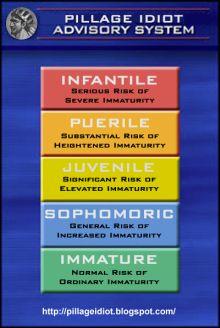If you can believe Google, in my 8 months writing some of the most juvenile, sophomoric stuff imaginable, I've never used the word "snot" or even "mucus." At least, not until just now.
Via BOTWT, we learn of a news item with the amazing headline "Giant Balls of 'Snot' Explain Ocean Mystery." The article begins thus:
Scientists have discovered giant sinking mucus "houses" that double the amount of food on the sea floor.And if you think I'm immature, imagine this: Some people calling themselves scientists actually collect this stuff.
The mucus houses, or "sinkers," are produced by tadpole-like animals not much bigger than your index finger. As sinkers drop to the sea floor, small sea critters and other food particles get stuck to the mucus and end up on the bottom of the ocean.
For years scientists have observed loads of life at the bottom of the ocean. But they weren't able to find enough food - carbon - to support all that life. Sinkers, previously overlooked, may help fill that gap.
"A sinker is basically snot," [Rob] Sherlock said. "It's very fragile. We have very skilled ROV (Remotely Operated Vehicle) pilots and special containers to collect these things. We were only able to adequately collect one out of four."Sherlock, who's with the Monterey Bay Aquarium Research Institute, apparently sees nothing odd in describing "snot" as "fragile." That certainly isn't how I would describe it. And this is not the kind of stuff you try to get off your finger. In fact, you really can't touch it at all.
They're so fragile that sometimes just touching one causes it to rapidly break apart. Sinkers are particularly good at staying out of sediment traps - the most common way of testing the amount of carbon food on the sea floor.How do the animals who create sinkers work?
The animals responsible for making sinkers are called giant larvaceans. They spin a mucus web, about a yard in diameter. They sit in the middle of the house and use it to filter food that is small enough for them to eat.Mmmmmm, a mucus web a yard in diameter made by "giant larvaceans." (Where do they fit into the TTLB Ecosystem?)
And last, need I say it? Mucus Web and the Giant Larvaceans would be an excellent name for a rock band.











|